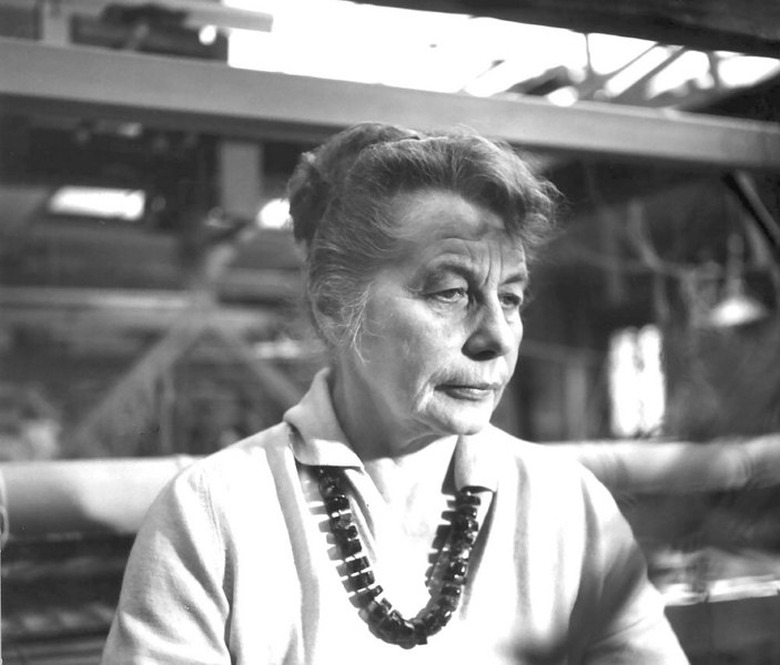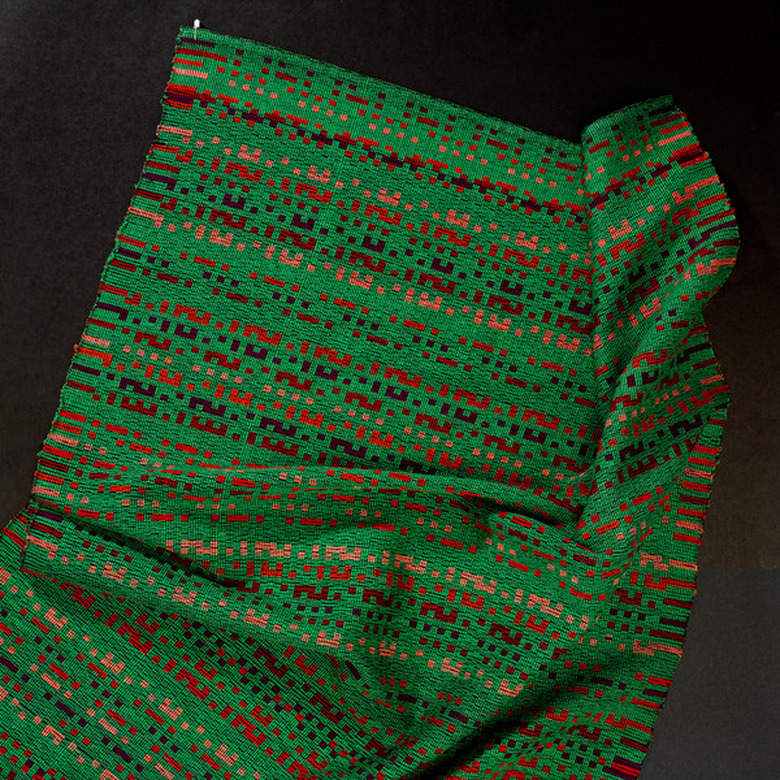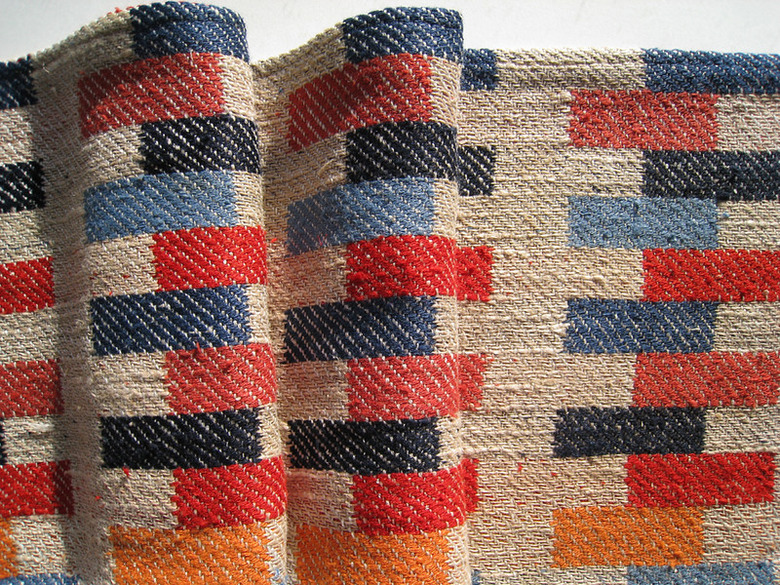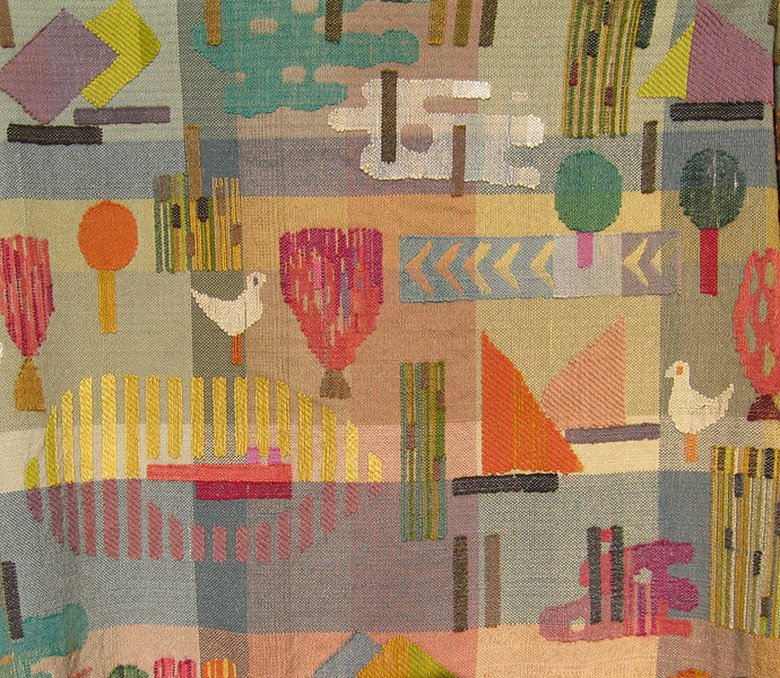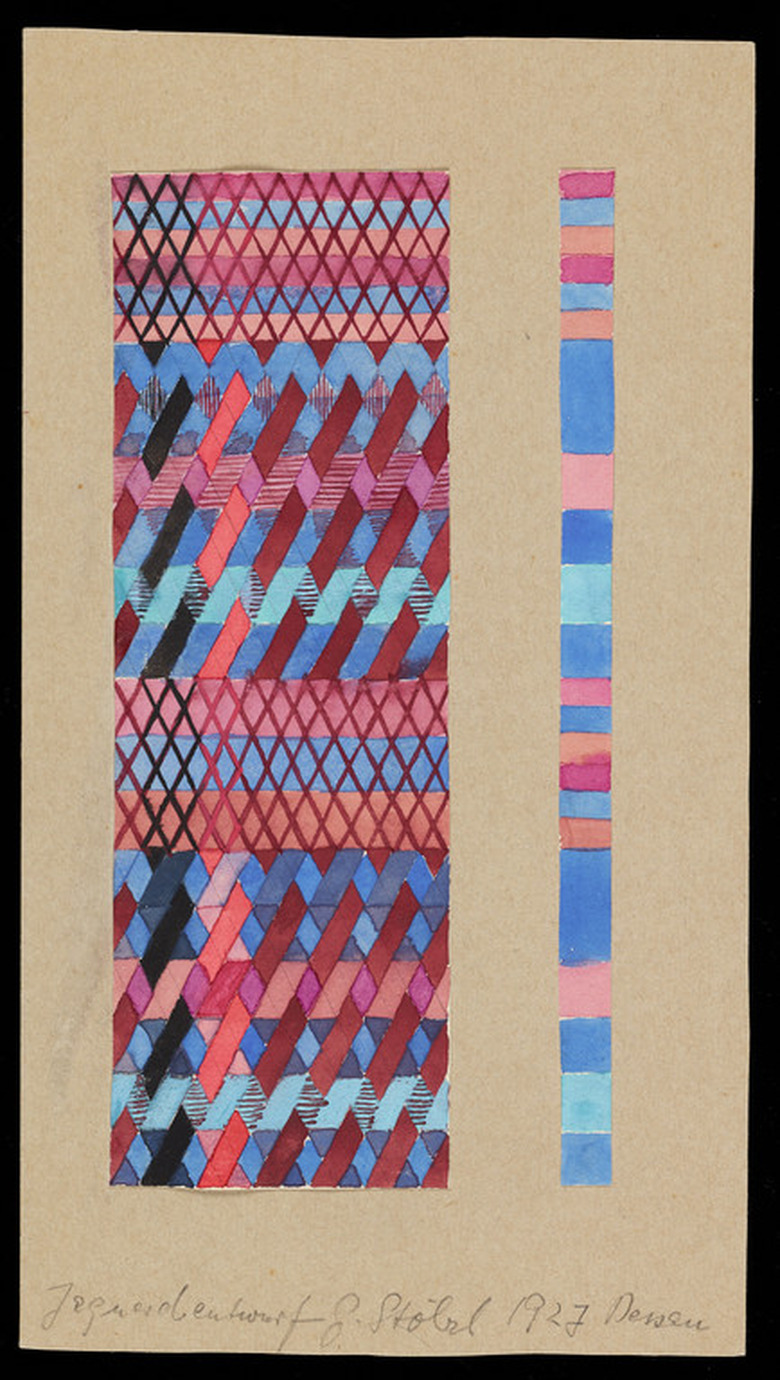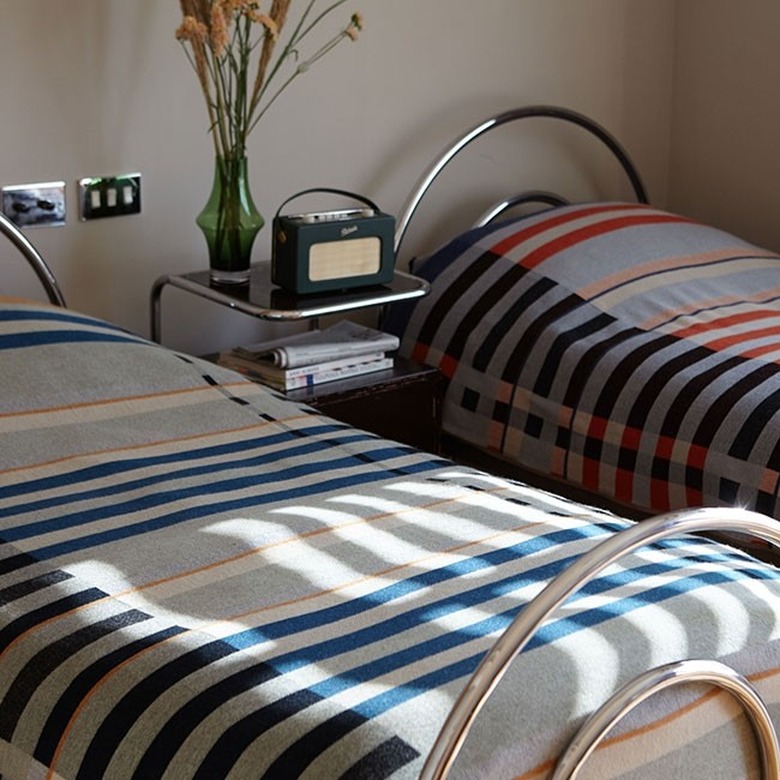Why You Should Know About The Legacy Of Weaver Gunta Stölzl
We may receive a commission on purchases made from links.
In a 1926 essay, Gunta Stölzl wrote: "Is the woven fabric one of those items that present a challenge for the creative efforts of man? Yes!"
But it's a challenge she would end up mastering over the course of her career, even while she had to fight to be taken seriously. Stölzl made her mark as a weaver in one of the most important contemporary design schools: the Bauhaus.
Founded by Walter Gropius, the school opened in 1919 and focused on uniting the worlds of handicrafts and arts, training students in everything from architecture to weaving to painting. 2019 marks the centennial of the school's opening; just recently, an entire museum dedicated to the Bauhaus came to life.
Stölzl is an important figure to highlight in the history of the Bauhaus, particularly because of the often under-highlighted stories of women creators in this era. Architecture editor, writer, and critic Catherine Slessor writes of the significance of revisiting the stories of the women at Bauhaus within the history of the school.
"Invariably, Bauhaus histories tend to be disproportionately dominated by male protagonists, with women receiving scant credit," writes Slessor.
It's important to think about the state of weaving in the time preceding Stölzl's career. The Arts and Crafts Movement, founded by William Morris, began in the 1860s. In the 19th century, there were "few art schools open to women," writes Cooper Hewitt, Smithsonian Design Museum Cataloguer Carey Gibbons. Women were mostly encouraged to pursue work that resembled what they already did in the domestic sphere, such as weaving, which reinforced the fact that the movement was largely male dominated.
Stölzl arrived at the Bauhaus in Weimar at the age of 22. From 1925-1931, she ran the weaving department and taught the next generation of female creators, many of whom were used to having to fight for their education.
"Like Gunta Stölzl, almost all female students arrived at the Bauhaus with previous schooling," Sigrid Wortmann Weltge writes in Bauhaus Textiles: Women Artists and the Weaving Workshop. "They were an exceptional group of pioneers at a time when educating women was not the norm. Barred from traditional art academies, they had studied at schools of applied arts and crafts, trade institutions, and with individual professors."
By many accounts, the early years of the Bauhaus restricted women to certain areas deemed proper for their gender. They could follow their passions in mediums like weaving, but were discouraged from other areas, like architecture.
"However, the ideas and innovations which they unleashed there were anything but traditional," writes Ulrike Müller in Bauhaus Women: Art, Handicraft, Design. "They led to a surge in development in industrial design and to an artistic re-evaluation of textile art."
Letters from 1926, however, show that Stölzl struggled over the years to be taken seriously. In a missive from December of that year, she writes that although she has "complete control over the weaving workshop," she doesn't yet have "the position or the contract or the salary." It was in 1927 that she became a master (a more honorific term than teacher), the only woman in the school to receive that title.
"She had attained this position through her own efforts, backed by the votes of of the members of her workshop . . . and despite the procrastination and hesitation of the Bauhaus masters," Monika Stadler, Stölz's daughter, writes in the foreword of Gunta Stölzl: Bauhaus Master.
That same year, when the Bauhaus moved to a new location, Stölzl found herself "bound to the new Bauhaus as a work master in the weaving department by the terms of an official contract with the city council of Dessau," writes Müller_._ At the school's new location, she helped to furnish the café, dorms, and other spaces.
During a 1928 trip to an international architectural congress in Moscow — which she attended as a Bauhuas representative — she met and fell in love with architect Arieh Sharon. Because Sharon was a Palestinian citizen, their marriage resulted in Stölzl losing her German citizenship. Tensions ran high at the Bauhaus, where she would one day find "a swastika fixed to her door," writes Müller.
After leaving the Bauhaus, she moved to Switzerland, where she ran a handweaving mill of her own.
More gaps in knowledge are continuing to be filled, for both figures like Stölzl and others that still need to be highlighted. Stölzl's work is currently on view as part of The Getty's exhibition "Bauhaus Beginnings," which tracks the evolution of the school and its many contributions.
"She was a protagonist of the full development of the school under Gropius's directorship and then under Hannes Meyer," Maristella Casciato, senior curator of architecture at the Getty Research Institute, tells Hunker. "Her role as master of the weaving workshop was essential in establishing the success of that specific activity."
Her sketches, even before the final weaving comes to life, also feel modern and visually exciting — a boon for those of us who are obsessed with pattern and follow color trends.
"The final design of any woven object — in terms of geometric pattern, nuance of color, interplay among the colors — was initially tested on paper," Casciato says. "These sketches also offered a set of exemplary models for the students. As a whole, these designs are both an exercise testing the aesthetic effect of the product and a way to produce knowledge to be shared with peers and students."
As Stadler writes, many of the artist's works were sold while the Bauhaus was active. In addition, she sold a few designs in the 1970s. Manufacturers, like the Spanish rug company GAN, have paid homage to her work. In 1997, designer Christopher Farr and business partner Matthew Bourne also worked with the Stölzl family to produce rugs from her original designs.
More recently, in tandem with the anniversary celebrations happening around the world, British design studio Wallace Sewell collaborated with Stadler to reissue the 1926 Prellerdecke blanket used in Bauhaus dormitories. It was released in its original color along with two new hues. As the Cooper Hewitt Museum production description explains, all the original blankets were lost by 1980.
Stölzl's work feels surprisingly modern in so many ways. Her expert use of color predates our fascination with Pantone hues; a few of her intricate patterns almost resemble computer glitches; the Prellerdecke blanket looks like something you'd find at Hem or West Elm.
Weaving and craftsmanship are having a revival of sorts in the modern decor world. In 2019, Pinterest reported that searches for textile art were up by 1,178%. If you search Etsy for "wall hanging," you'll see more than 575,000 results.
And Stölzl's works is continuing to be catalogued for posterity. This 1928 weaving, for example, is now a part of the Museum of Modern Art's collection — a reminder that her contributions have gone beyond the Bauhaus.
